Evidence of suppression of onchocerciasis transmission in the Venezuelan Amazonian focus
- PMID: 26813296
- PMCID: PMC4728794
- DOI: 10.1186/s13071-016-1313-z
Evidence of suppression of onchocerciasis transmission in the Venezuelan Amazonian focus
Abstract
Background: The World Health Organization (WHO) has set goals for onchocerciasis elimination in Latin America by 2015. Most of the six previously endemic countries are attaining this goal by implementing twice a year (and in some foci, quarterly) mass ivermectin (Mectizan®) distribution. Elimination of transmission has been verified in Colombia, Ecuador and Mexico. Challenges remain in the Amazonian focus straddling Venezuela and Brazil, where the disease affects the hard-to-reach Yanomami indigenous population. We provide evidence of suppression of Onchocerca volvulus transmission by Simulium guianense s.l. in 16 previously hyperendemic Yanomami communities in southern Venezuela after 15 years of 6-monthly and 5 years of 3-monthly mass ivermectin treatment.
Methods: Baseline and monitoring and evaluation parasitological, ophthalmological, entomological and serological surveys were conducted in selected sentinel and extra-sentinel communities of the focus throughout the implementation of the programme.
Results: From 2010 to 2012-2015, clinico-parasitological surveys indicate a substantial decrease in skin microfilarial prevalence and intensity of infection; accompanied by no evidence (or very low prevalence and intensity) of ocular microfilariae in the examined population. Of a total of 51,341 S. guianense flies tested by PCR none had L3 infection (heads only). Prevalence of infective flies and seasonal transmission potentials in 2012-2013 were, respectively, under 1% and 20 L3/person/transmission season. Serology in children aged 1-10 years demonstrated that although 26 out of 396 (7%) individuals still had Ov-16 antibodies, only 4/218 (2%) seropositives were aged 1-5 years.
Conclusions: We report evidence of recent transmission and morbidity suppression in some communities of the focus representing 75% of the Yanomami population and 70% of all known communities. We conclude that onchocerciasis transmission could be feasibly interrupted in the Venezuelan Amazonian focus.
Figures
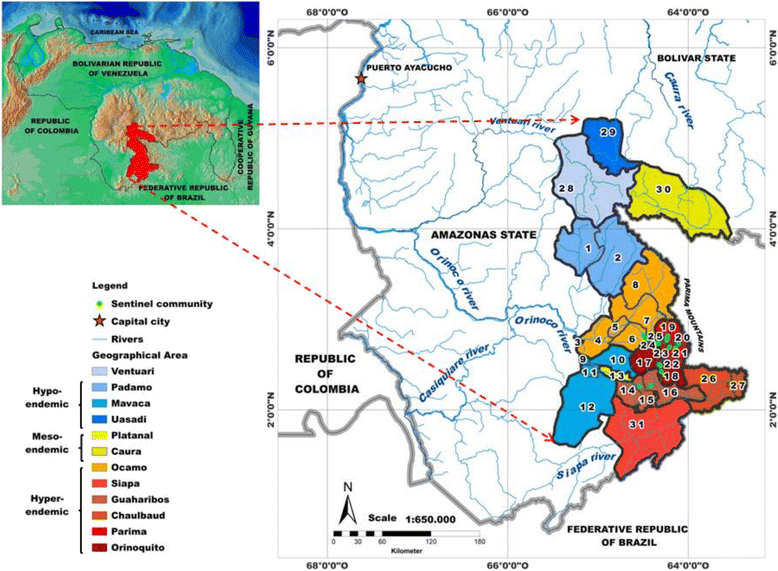
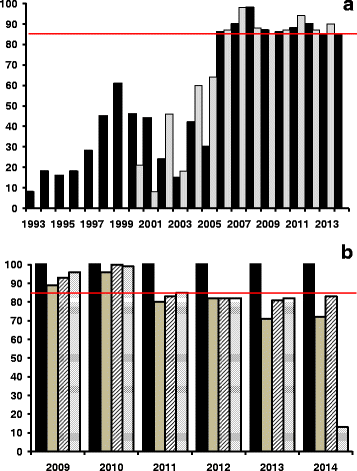
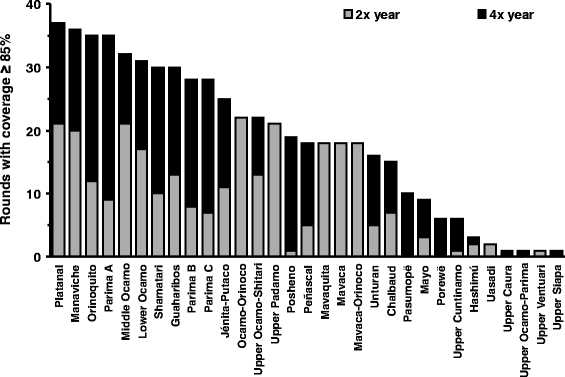
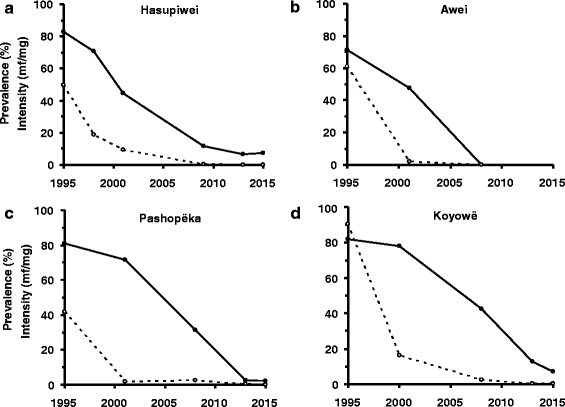
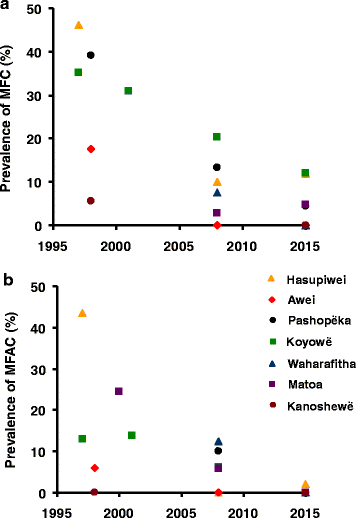
References
-
- Duke BOL. Human onchocerciasis: an overview of the disease. Acta Leiden. 1990;59(1–2):9–24. - PubMed
-
- Bradley JE, Whitworth J, Basáñez MG. Onchocerciasis. In: Wakelin D, Cox F, Despommier D, Gillespie S, editors. Topley and Wilson’s Microbiology and Microbial Infections (Parasitology) 10. London: Edward Arnold Publishers; 2005. pp. 781–801.
-
- Robles R. Enfermedad nueva en Guatemala. Juv Med Guatemala. 1917;17:97–115.
-
- World Health Organization Elimination of onchocerciasis in the WHO Region of the Americas: Ecuador’s progress towards verification of elimination. Wkly Epidemiol Rec. 2014;89(37):401–5. - PubMed
Publication types
MeSH terms
Substances
Grants and funding
LinkOut - more resources
Full Text Sources
Other Literature Sources

